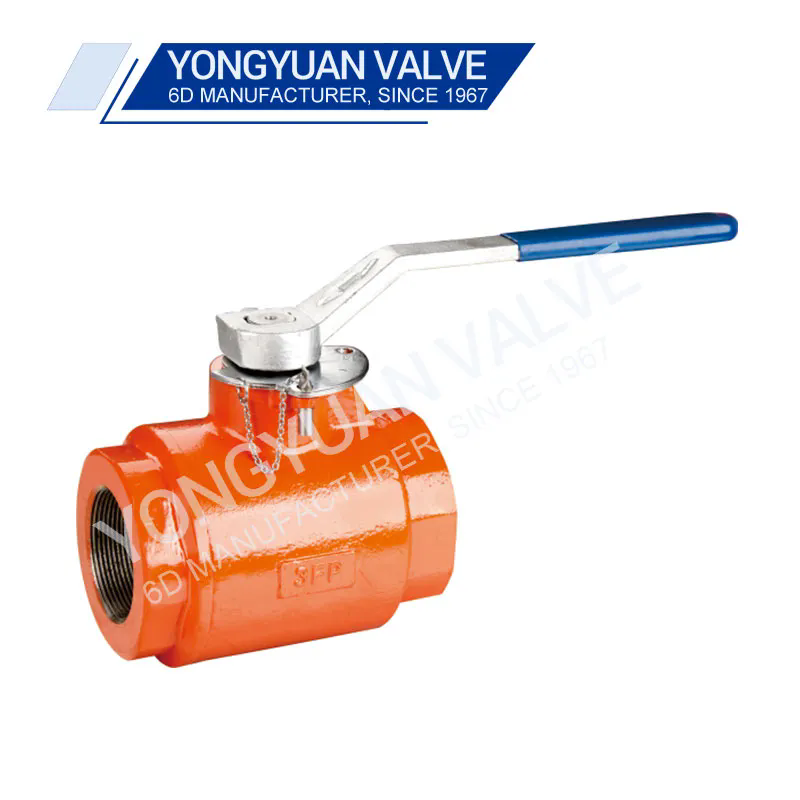Oilfield Threaded Ball Valves: Essential Components for Efficient Fluid Control
2024-08-16
In the oil and gas industry, precise and reliable fluid control is crucial for the safe and efficient operation of equipment. Oilfield threaded ball valves play a significant role in this process, offering effective solutions for managing the flow of various fluids under high-pressure and harsh environmental conditions. This blog will explore the features, benefits, applications, and trends related to oilfield threaded ball valves.
1. What is an Oilfield Threaded Ball Valve?
An oilfield threaded ball valve is a type of valve used to control the flow of fluids in pipelines and other systems within the oil and gas industry. The valve consists of a ball with a hole through its center, which rotates within a cylindrical cavity. The ball’s rotation opens or closes the flow path, enabling precise control of fluid movement.
Key Features of Oilfield Threaded Ball Valves:
- Threaded Connections: The valve features threaded connections that allow it to be easily installed and removed from piping systems without the need for welding or special tools.
- Ball Mechanism: The ball inside the valve has a central hole that aligns with the pipeline when the valve is open, allowing fluid to pass through. When the ball is rotated to a perpendicular position, the flow is shut off.
- Durable Materials: Constructed from high-strength materials such as carbon steel, stainless steel, or alloy steel to withstand high pressure, temperature fluctuations, and corrosive environments.
- Sealing: Equipped with high-quality sealing mechanisms to ensure leak-proof performance and reliable operation.
2. Benefits of Oilfield Threaded Ball Valves
Oilfield threaded ball valves offer several advantages that make them ideal for use in the oil and gas industry:
- Reliable Performance: The design of threaded ball valves ensures consistent and reliable performance, with minimal maintenance required. The ball mechanism provides a tight seal, preventing leaks and maintaining control over fluid flow.
- Ease of Installation: The threaded connections allow for straightforward installation and removal, reducing downtime and simplifying maintenance procedures.
- High Pressure and Temperature Tolerance: These valves are designed to handle extreme pressure and temperature conditions commonly found in oil and gas operations, ensuring durability and longevity.
- Low Operating Torque: The smooth rotation of the ball requires minimal operating torque, making the valve easy to operate and reducing the wear on the actuator.
- Versatility: Threaded ball valves can be used in a variety of applications, including onshore and offshore oilfields, pipelines, and processing facilities.
3. Applications of Oilfield Threaded Ball Valves
Oilfield threaded ball valves are used in a range of applications within the oil and gas industry:
- Pipeline Systems: They are commonly used to control the flow of oil, gas, and other fluids in pipeline systems, providing efficient and reliable flow regulation.
- Drilling Equipment: Threaded ball valves are used in drilling rigs and associated equipment to manage fluid flow during the drilling process.
- Production Facilities: In production facilities, these valves control the flow of crude oil, natural gas, and other substances during processing and refining operations.
- Storage Tanks: Ball valves are employed in storage tanks to manage the transfer and containment of various fluids.
- Offshore Platforms: On offshore oil platforms, threaded ball valves are used to handle the unique challenges of the marine environment, including high pressure and corrosive conditions.
4. Maintenance and Care
Proper maintenance and care are essential to ensure the longevity and optimal performance of oilfield threaded ball valves:
- Regular Inspection: Periodically inspect the valve for signs of wear, corrosion, or damage. Ensure that the threads are intact and free from debris.
- Cleaning: Keep the valve and its threads clean to prevent blockages and ensure smooth operation. Use appropriate cleaning agents that are compatible with the valve materials.
- Lubrication: Apply lubrication to the valve’s moving parts as recommended by the manufacturer to reduce friction and wear.
- Testing: Conduct regular pressure tests to verify that the valve maintains its sealing integrity and performance under operating conditions.
- Replacement: Replace any worn or damaged components promptly to prevent potential leaks or failures.
5. Future Trends and Innovations
The field of oilfield threaded ball valves is evolving with advancements in technology and industry needs:
- Enhanced Materials: Research is focused on developing advanced materials that offer better resistance to corrosion, high temperatures, and pressure, improving the durability and performance of ball valves.
- Smart Valves: Integration of smart technologies, such as sensors and automation, is enhancing the functionality of ball valves by providing real-time monitoring and control capabilities.
- Sustainability: There is a growing emphasis on designing valves that are environmentally friendly, including those that reduce emissions and support sustainable practices.
- Improved Design: Innovations in valve design are aimed at increasing efficiency, reducing maintenance requirements, and extending the lifespan of ball valves.
In conclusion, oilfield threaded ball valves are essential components in the oil and gas industry, offering reliable, durable, and efficient fluid control. Their ability to handle extreme conditions and provide precise control makes them a preferred choice for various applications, from pipelines to offshore platforms. As technology advances, oilfield threaded ball valves will continue to evolve, offering enhanced performance, durability, and functionality to meet the growing demands of the industry.



